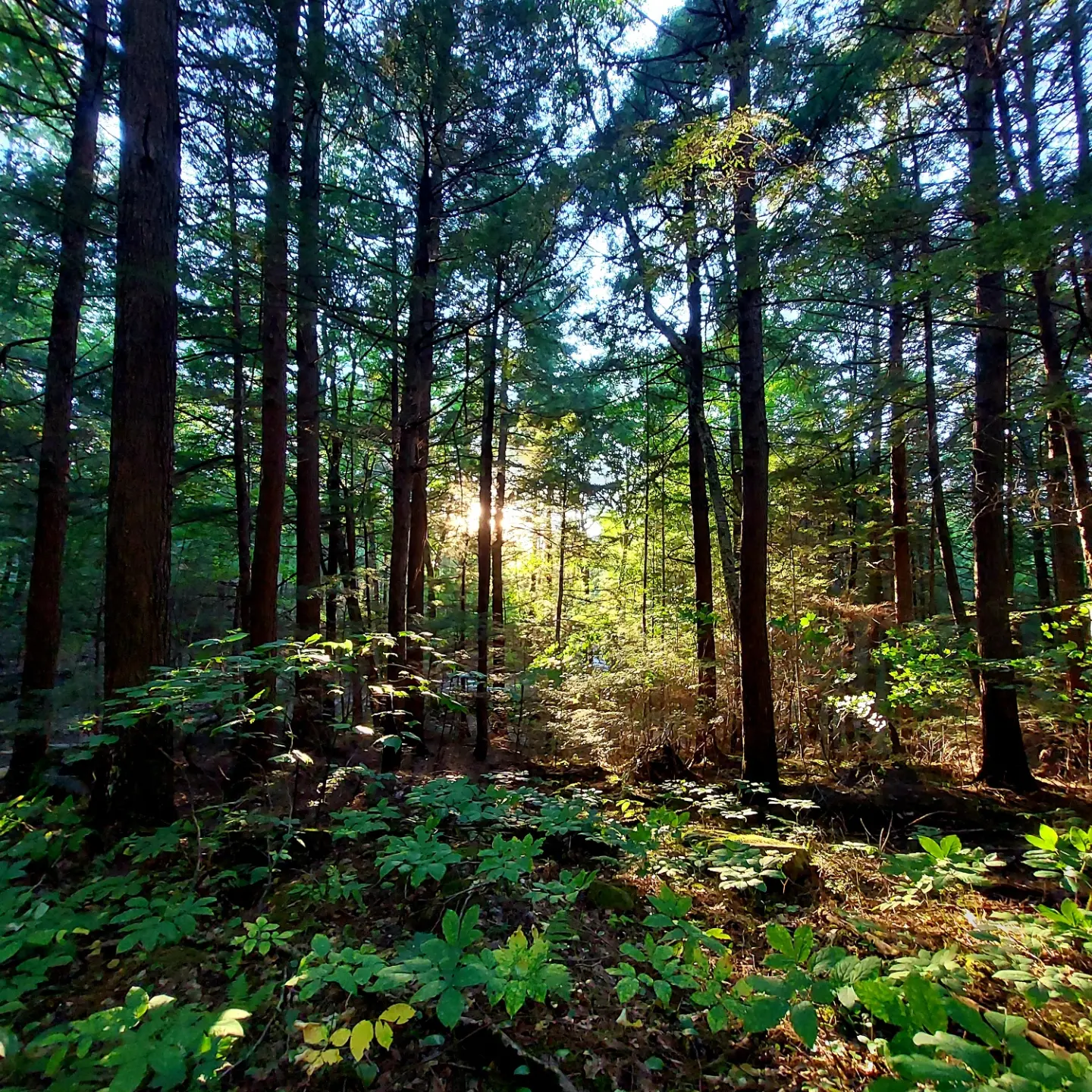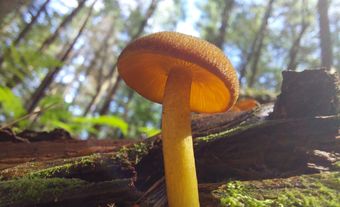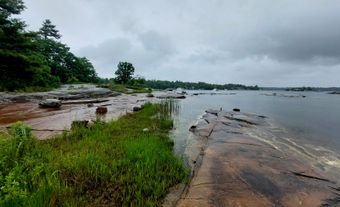A forest is an ecosystem characterized by a dense and extensive tree cover. It includes not only trees but also shrubs, vines, herbs, mosses, microorganisms, insects, and vertebrate animals that interact with each other and with their environment. This complex pattern of life is a system in delicate balance. Natural or human-caused alterations may trigger far-reaching and sometimes disastrous changes.

Main Forest Types
Worldwide, three main forest types are related directly to climatic zones: equatorial- and tropical-region forests, temperate-zone forests, and forests associated with colder climates. Most of Canada's forests lie within the cold-climate boreal belt, which extends through Alaska, Siberia, Finland, Sweden, and Norway. The boreal forest is composed predominantly of coniferous trees. In Canada, temperate-region forests extend only in milder areas along the Pacific coast and southwestern Ontario. The cool, temperate maritime climate in British Columbia supports a forest dominated by conifers. In southern Ontario, a deciduous forest (i.e., with broad-leaved trees) has developed due to hot and humid summer temperatures. Between this deciduous forest and the cold-climate boreal forest to the north exists a transitional mixed-wood forest, where coniferous and deciduous trees are about equally represented.
Canada's native coniferous trees and shrubs (34 species) include nine species of pine, five of spruce, four of juniper, three of hemlock, three of larch, four of fir, one of cedar, two of yew and one of cypress. These are also known as softwoods, evergreens or needle-leaved trees. A mature conifer usually has a straight central trunk and short branches, forming a distinctive, tapering crown. Except for larches, conifers retain their needle-like leaves for two or more years; the leaves are not shed all at once.
Canada has just over 100 species of native deciduous trees, including ten of maple, ten of oak, six of birch, six of poplar, five of hickory, four of ash, three of elm and members of 32 other genera. Deciduous trees, also known as hardwoods, vary considerably in form but often exhibit broad, rounded crowns with branches as long or longer than their short, tapered trunks. Except for arbutus, the Canadian broad-leaved trees shed all their leaves annually.

History of Forests
Trees appeared before the evolution of grasses and the age of dinosaurs. According to paleobotanists, plant life originated in a marine environment over 3 billion years ago. Plants moved onto land only in the late Silurian and early Devonian periods (426–392 million years ago). Less than one metre tall, these first land plants were spore-bearers tied to damp environments. The first forests appeared between 410 and 353 million years ago in the Devonian period. They were heavily stocked with tree-like club mosses sporting slender trunks and drooping branches. The earliest fossils of gymnosperms (i.e., the most ancient groups of seed plants) date to the late Devonian (375–353 million years ago). Gymnosperms, of which modern coniferous trees are examples, produce seeds that are not enclosed by an ovary.
At the end of the Devonian period, an extensive, shallow ocean flooded parts of the North American continent. Rivers poured sediments into this sea, producing great swamps from which the monumental forests of the Carboniferous period (353–300 million years ago) eventually sprang. Here, tree-size ancestors of present-day diminutive horsetails flourished along with ferns, seed ferns and dominant club mosses. Some of them grew to over 30 m in height. These junglelike forests succumbed to major climatic changes at the end of the Carboniferous period. They were buried, compressed and ultimately converted into coal, which has fuelled a great part of modern industry. During the Carboniferous, gymnosperms predominated at higher elevations. Gymnosperms, such as primitive conifers and palm-like cycads, subsequently increased while the numbers of fern and horsetail decreased.
During the Triassic period (250–205.7 million years ago), some plants developed the ability to produce flowers and encase their seeds inside ovaries or fruits; these were the angiosperms (see seed plants). Many flowering trees (e.g., willow, poplar, maple, magnolias) and flowering herbaceous plants appeared, and by the end of the Cretaceous period (65 million years ago), angiosperms dominated the floral landscape. Different species of insects, birds and mammals developed in parallel with those plants, drawing upon the forest and helping to sustain and expand it.
About 55 million years ago, a long-term cooling trend began in the "modern" era of the Cenozoic. As it intensified, forests that had thrived comfortably within the Arctic Circle were pushed southwards. Then, just under 2 million years ago, all but a minute part of Canada was slowly covered by four successive, monstrous ice sheets, sometimes as much as 3 km thick. Great glacial tongues also deeply penetrated the northeastern U.S. (see glaciation). The advancing ice sheets scoured the forestland, but their slow movement enabled the forest to withdraw each time and find refuge in warmer southern environments.
Following the retreat of the last ice sheets (about 10,000 years ago), the re-establishment of the forest began. The first species to move northward were the algae and fungi, followed by small plants, such as mosses, lichens and horsetails. These could live on the cold, wet fringes of the land most recently vacated by ice. Next came the hardy gymnosperms: spruces, firs, pines and larches. Finally, the deciduous trees arrived: the oaks, ashes, maples and other species. These slow-moving belts of vegetation present the essential pattern of Canadian forests today.
See also Biogeography.


 Share on Facebook
Share on Facebook Share on X
Share on X Share by Email
Share by Email Share on Google Classroom
Share on Google Classroom








